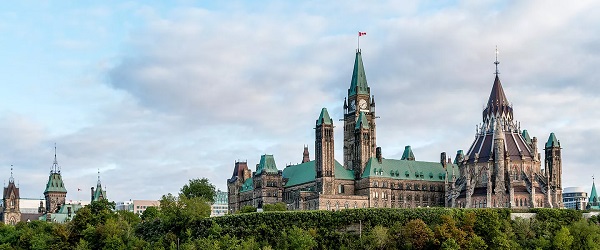Brownstone Institute
The Pandemic Excuse for a Corporatist Coup

From the Brownstone Institute
We’ve just come across a document hosted by the Department of Homeland Security, posted March 2023, but written in 2007, that amounts to a full-blown corporatist imposition on the US, abolishing anything remotely resembling the Bill of Rights and Constitutional law. It is right there in plain sight for anyone curious enough to dig.
There is nothing in it that you haven’t already experienced with lockdowns. What makes it interesting are the participants in the forging of the plan, which is pretty much the whole of corporate America as it stood in 2007. It was a George W. Bush initiative. The conclusions are startling.
“Quarantine is a legally enforceable declaration that a government body may institute over individuals potentially exposed to a disease, but who are not symptomatic. If enacted, Federal quarantine laws will be coordinated between CDC and State and local public health officials, and, if necessary, law enforcement personnel…The government may also enact travel restrictions to limit the movement of people and products between geographic areas in an effort to limit disease transmission and spread. Authorities are currently reviewing possible plans to curtail international travel upon a pandemic’s emergence overseas.
“Limiting public assembly opportunities also helps limit the spread of disease. Concert halls, movie theaters, sports arenas, shopping malls, and other large public gathering places might close indefinitely during a pandemic—whether because of voluntary closures or government-imposed closures. Similarly, officials may close schools and non-essential businesses during pandemic waves in an effort to significantly slow disease transmission rates. These strategies aim to prevent the close interaction of individuals, the primary conduit of spreading the influenza virus. Even taking steps such as limiting person-to-person interactions within a distance of three feet or avoiding instances of casual close contact, such as shaking hands, will help limit disease spread.”
There we have it: the pandemic plans. They once seemed abstract. In 2020, they became very real. Your rights were deleted. No more freedom even to have house guests. In those days, the rule was to enforce only three feet of distance rather than six feet of distance, neither of which had any basis in science. Indeed, the actual scientific literature even at that time recommended against any physical interventions designed to limit the spread of respiratory viruses. They were known not to work. The entire profession of public health accepted that.
Therefore, for many years before lockdowns wrecked economic functioning, there had been two parallel tracks in operation, one intellectual/academic and one imposed by state/corporate managers. They had nothing to do with each other. This situation persisted for the better part of 15 years. Suddenly in 2020, there was a reckoning, and the state/corporate managers won it. Seemingly out of nowhere, liberty as we have long known it was gone.
Back in 2005, I first came across a Bush administration scheme, an early draft of the above, that would have ended freedom as we know it. It was a scheme for combating the bird flu, which officials back then imagined would involve universal quarantines, business and event closures, travel restrictions, and more.
I wrote: “Even if the flu does come, and taxpayers have coughed up, the government will surely have a ball imposing travel restrictions, shutting down schools and businesses, quarantining cities, and banning public gatherings…It is a serious matter when the government purports to plan to abolish all liberty and nationalize all economic life and put every business under the control of the military, especially in the name of a bug that seems largely restricted to the bird population. Perhaps we should pay more attention. Perhaps such plans for the total state ought to even ruffle our feathers a bit.”
For years I wrote about this topic, trying to get others interested. It was all there in black and white. At the drop of a hat, under the guise of a pandemic that only state managers can declare, real or drummed up, freedom itself could be abolished. These plans were never legislated, debated, or publicly discussed. They were simply posted as the result of various consultations with experts, who worked out their totalitarian fantasies as if scripting a Hollywood film.
The 2007 blueprint is more explicit than anything I’ve seen. It comes from the National Infrastructure Advisory Council, which “includes executive leaders from the private sector and state/local government who advise the White House on how to reduce physical and cyber risks and improve the security and resilience of the nation’s critical infrastructure sectors. The NIAC is administered on behalf of the President in accordance with the Federal Advisory Committee Act under the authority of the Secretary of the US Department of Homeland Security.”
And who sat on this committee in 2007 that decided that governments “may close schools and non-essential businesses”? Let us see.
- Mr. Edmund G. Archuleta, General Manager, El Paso Water Utilities
- Mr. Alfred R. Berkeley III, Chairman and CEO, Pipeline Trading Group, LLC, and former President and Vice Chairman of NASDAQ
- Chief Rebecca F. Denlinger, Fire Chief, Cobb County (Ga.) Fire and Emergency Services
- Chief Gilbert G. Gallegos, Police Chief (ret.), City of Albuquerque, N.M. Police Department
- Ms. Martha H. Marsh, President and CEO, Stanford Hospital and Clinics
- Mr. James B. Nicholson, President and CEO, PVS Chemical, Inc.
- Mr. Erle A. Nye, Chairman Emeritus, TXU Corp., NIAC Chairman
- Mr. Bruce A. Rohde, Chairman and CEO Emeritus, ConAgra Foods, Inc.
- Mr. John W. Thompson, Chairman and CEO, Symantec Corporation
- Mr. Brent Baglien, ConAgra Foods, Inc.
- Mr. David Barron, Bell South
- Mr. Dan Bart, TIA
- Mr. Scott Blanchette, Healthways
- Ms. Donna Burns, Georgia Emergency Management Agency
- Mr. Rob Clyde, Symantec Corporation
- Mr. Scott Culp, Microsoft
- Mr. Clay Detlefsen, International Dairy Foods Association
- Mr. Dave Engaldo, The Options Clearing Corporation
- Ms. Courtenay Enright, Symantec Corporation
- Mr. Gary Gardner, American Gas Association
- Mr. Bob Garfield, American Frozen Foods Institute
- Ms. Joan Gehrke, PVS Chemical, Inc.
- Ms. Sarah Gordon, Symantec
- Mr. Mike Hickey, Verizon
- Mr. Ron Hicks, Anadarko Petroleum Corporation
- Mr. George Hender, The Options Clearing Corporation
- Mr. James Hunter, City of Albuquerque, NM Emergency Management
- Mr. Stan Johnson, North American Electric Reliability Council (NERC)
- Mr. David Jones, El Paso Corporation
- Inspector Jay Kopstein, Operations Division, New York City Police Department (NYPD)
- Ms. Tiffany Jones, Symantec Corporation
- Mr. Bruce Larson, American Water
- Mr. Charlie Lathram, Business Executives for National Security (BENS)/BellSouth
- Mr. Turner Madden, Madden & Patton
- Chief Mary Beth Michos, Prince William County (Va.) Fire and Rescue
- Mr. Bill Muston, TXU Corp.
- Mr. Vijay Nilekani, Nuclear Energy Institute
- Mr. Phil Reitinger, Microsoft
- Mr. Rob Rolfsen, Cisco Systems, Inc.
- Mr. Tim Roxey, Constellation
- Ms. Charyl Sarber, Symantec
- Mr. Lyman Shaffer, Pacific Gas and Electric,
- Ms. Diane VanDeHei, Association of Metropolitan Water Agencies (AMWA)
- Ms. Susan Vismor, Mellon Financial Corporation
- Mr. Ken Watson, Cisco Systems, Inc.
- Mr. Greg Wells, Southwest Airlines
- Mr. Gino Zucca, Cisco Systems, Inc.
- Department of Health and Human Services (HHS) Resources
- Dr. Bruce Gellin, Rockefeller Foundation
- Dr. Mary Mazanec
- Dr. Stuart Nightingale, CDC
- Ms. Julie Schafer
- Dr. Ben Schwartz, CDC
- Department of Homeland Security (DHS) Resources
- Mr. James Caverly, Director, Infrastructure Partnerships Division
- Ms. Nancy Wong, NIAC Designated Federal Officer (DFO)
- Ms. Jenny Menna, NIAC Designated Federal Officer (DFO)
- Dr. Til Jolly
- Mr. Jon MacLaren
- Ms. Laverne Madison
- Ms. Kathie McCracken
- Mr. Bucky Owens
- Mr. Dale Brown, Contractor
- Mr. John Dragseth, IP attorney, Contractor
- Mr. Jeff Green, Contractor
- Mr. Tim McCabe, Contractor
- Mr. William B. Anderson, ITS America
- Mr. Michael Arceneaux, Association of Metropolitan Water Agencies (AMWA)
- Mr. Chad Callaghan, Marriott Corporation
- Mr. Ted Cromwell, American Chemistry Council (ACC)
- Ms. Jeanne Dumas, American Trucking Association (ATA)
- Ms. Joan Harris, US Department of Transportation, Office of the Secretary
- Mr. Greg Hull, American Public Transportation Association
- Mr. Joe LaRocca, National Retail Federation
- Mr. Jack McKlveen, United Parcel Service (UPS)
- Ms. Beth Montgomery, Wal-Mart
- Dr. J. Patrick O’Neal, Georgia Office of EMS/Trauma/EP
- Mr. Roger Platt, The Real Estate Roundtable
- Mr. Martin Rojas, American Trucking Association (ATA)
- Mr. Timothy Sargent, Senior Chief, Economic Analysis and Forecasting Division, Economic and Fiscal Policy Branch, Finance Canada
In other words, big everything: food, energy, retail, computers, water, and you name it. It’s a corporatist dream team.
Consider ConAgra itself. What is that? It is Banquet, Chef Boyardee, Healthy Choice, Orville Redenbacher’s, Reddi-Wip, Slim Jim, Hunt’s Peter Pan Egg Beaters, Hebrew National, Marie Callender’s, P.F. Chang’s, Ranch Style Beans, Ro*Tel, Wolf Brand Chili, Angie’s, Duke’s, Gardein, Frontera, Bertolli, among many other seemingly independent brands that are all actually one company.
Now, ask yourself: why might all these companies favor a plan for lockdowns? Why might WalMart, for example? It stands to reason. Lockdowns are a massive interference with competitive capitalism. They provide the best possible subsidy to big business while shutting down independent small businesses and putting them at a huge disadvantage once the opening up happens.
In other words, it is an industrial racket, very much akin to interwar-style fascism, a corporatist combination of big business and big government. Throw pharma into the mix and you see exactly what came to pass in 2020, which amounted to the largest transfer of wealth from small and medium-sized business plus the middle class to wealthy industrialists in the history of humanity.
The document is open even about managing information flows: “The public and private sectors should align their communications, exercises, investments, and support activities absolutely with both the plan and priorities during a pandemic influenza event. Continue data gathering, analysis, reporting, and open review.”
There is nothing in any of this that fits with any Western tradition of law and liberty. Nothing. It was never approved by any democratic means. It was never part of any political campaign. It has never been the subject of any serious media examination. No think tank has ever pushed back on such plans in any systematic way.
The last serious attempt to debunk this whole apparatus was from D.H. Henderson in 2006. His two co-authors on that paper eventually came around to going along with lockdowns of 2020. Henderson died in 2016. One of the co-authors of the original article told me that if Dr. Henderson had been around, instead of Dr. Fauci, the lockdowns would never have taken place.
Here we are four years following the deployment of this lockdown machinery, and we are witness to what it destroys. It would be nice to say that the entire apparatus and theory behind it have been fully discredited.
But that is not correct. All the plans are still in place. There have been no changes in federal law. Not one effort has been made to dismantle the corporatist/biosecurity planning state that made all this possible. Every bit of it is in place for the next go-around.
Much of the authority for this whole coup traces to the Public Health Services Act of 1944, which was passed in wartime. For the first time in US history, it gave the federal government the power to quarantine. Even when the Biden administration was looking for some basis to justify its transportation mask mandate, it fell back to this one piece of legislation.
If anyone really wants to get to the root of this problem, there are decisive steps that need to be taken. The indemnification of pharma from liability for harm needs to be repealed. The court precedent of forced shots in Jacobson needs to be overthrown. But even more fundamentally, the quarantine power itself has to go, and that means the full repeal of the Public Health Services Act of 1944. That is the root of the problem. Freedom will not be safe until it is uprooted.
As it stands right now, everything that unfolded in 2020 and 2021 can happen again. Indeed, the plans are in place for exactly that.
Brownstone Institute
FDA Exposed: Hundreds of Drugs Approved without Proof They Work

From the Brownstone Institute
By
The US Food and Drug Administration (FDA) has approved hundreds of drugs without proof that they work—and in some cases, despite evidence that they cause harm.
That’s the finding of a blistering two-year investigation by medical journalists Jeanne Lenzer and Shannon Brownlee, published by The Lever.
Reviewing more than 400 drug approvals between 2013 and 2022, the authors found the agency repeatedly ignored its own scientific standards.
One expert put it bluntly—the FDA’s threshold for evidence “can’t go any lower because it’s already in the dirt.”
A System Built on Weak Evidence
The findings were damning—73% of drugs approved by the FDA during the study period failed to meet all four basic criteria for demonstrating “substantial evidence” of effectiveness.
Those four criteria—presence of a control group, replication in two well-conducted trials, blinding of participants and investigators, and the use of clinical endpoints like symptom relief or extended survival—are supposed to be the bedrock of drug evaluation.
Yet only 28% of drugs met all four criteria—40 drugs met none.
These aren’t obscure technicalities—they are the most basic safeguards to protect patients from ineffective or dangerous treatments.
But under political and industry pressure, the FDA has increasingly abandoned them in favour of speed and so-called “regulatory flexibility.”
Since the early 1990s, the agency has relied heavily on expedited pathways that fast-track drugs to market.
In theory, this balances urgency with scientific rigour. In practice, it has flipped the process. Companies can now get drugs approved before proving that they work, with the promise of follow-up trials later.
But, as Lenzer and Brownlee revealed, “Nearly half of the required follow-up studies are never completed—and those that are often fail to show the drugs work, even while they remain on the market.”
“This represents a seismic shift in FDA regulation that has been quietly accomplished with virtually no awareness by doctors or the public,” they added.
More than half the approvals examined relied on preliminary data—not solid evidence that patients lived longer, felt better, or functioned more effectively.
And even when follow-up studies are conducted, many rely on the same flawed surrogate measures rather than hard clinical outcomes.
The result: a regulatory system where the FDA no longer acts as a gatekeeper—but as a passive observer.
Cancer Drugs: High Stakes, Low Standards
Nowhere is this failure more visible than in oncology.
Only 3 out of 123 cancer drugs approved between 2013 and 2022 met all four of the FDA’s basic scientific standards.
Most—81%—were approved based on surrogate endpoints like tumour shrinkage, without any evidence that they improved survival or quality of life.
Take Copiktra, for example—a drug approved in 2018 for blood cancers. The FDA gave it the green light based on improved “progression-free survival,” a measure of how long a tumour stays stable.
But a review of post-marketing data showed that patients taking Copiktra died 11 months earlier than those on a comparator drug.
It took six years after those studies showed the drug reduced patients’ survival for the FDA to warn the public that Copiktra should not be used as a first- or second-line treatment for certain types of leukaemia and lymphoma, citing “an increased risk of treatment-related mortality.”
Elmiron: Ineffective, Dangerous—And Still on the Market
Another striking case is Elmiron, approved in 1996 for interstitial cystitis—a painful bladder condition.
The FDA authorized it based on “close to zero data,” on the condition that the company conduct a follow-up study to determine whether it actually worked.
That study wasn’t completed for 18 years—and when it was, it showed Elmiron was no better than placebo.
In the meantime, hundreds of patients suffered vision loss or blindness. Others were hospitalized with colitis. Some died.
Yet Elmiron is still on the market today. Doctors continue to prescribe it.
“Hundreds of thousands of patients have been exposed to the drug, and the American Urological Association lists it as the only FDA-approved medication for interstitial cystitis,” Lenzer and Brownlee reported.
“Dangling Approvals” and Regulatory Paralysis
The FDA even has a term—”dangling approvals”—for drugs that remain on the market despite failed or missing follow-up trials.
One notorious case is Avastin, approved in 2008 for metastatic breast cancer.
It was fast-tracked, again, based on ‘progression-free survival.’ But after five clinical trials showed no improvement in overall survival—and raised serious safety concerns—the FDA moved to revoke its approval for metastatic breast cancer.
The backlash was intense.
Drug companies and patient advocacy groups launched a campaign to keep Avastin on the market. FDA staff received violent threats. Police were posted outside the agency’s building.
The fallout was so severe that for more than two decades afterwards, the FDA did not initiate another involuntary drug withdrawal in the face of industry opposition.
Billions Wasted, Thousands Harmed
Between 2018 and 2021, US taxpayers—through Medicare and Medicaid—paid $18 billion for drugs approved under the condition that follow-up studies would be conducted. Many never were.
The cost in lives is even higher.
A 2015 study found that 86% of cancer drugs approved between 2008 and 2012 based on surrogate outcomes showed no evidence that they helped patients live longer.
An estimated 128,000 Americans die each year from the effects of properly prescribed medications—excluding opioid overdoses. That’s more than all deaths from illegal drugs combined.
A 2024 analysis by Danish physician Peter Gøtzsche found that adverse effects from prescription medicines now rank among the top three causes of death globally.
Doctors Misled by the Drug Labels
Despite the scale of the problem, most patients—and most doctors—have no idea.
A 2016 survey published in JAMA asked practising physicians a simple question—what does FDA approval actually mean?
Only 6% got it right.
The rest assumed that it meant the drug had shown clear, clinically meaningful benefits—such as helping patients live longer or feel better—and that the data was statistically sound.
But the FDA requires none of that.
Drugs can be approved based on a single small study, a surrogate endpoint, or marginal statistical findings. Labels are often based on limited data, yet many doctors take them at face value.
Harvard researcher Aaron Kesselheim, who led the survey, said the results were “disappointing, but not entirely surprising,” noting that few doctors are taught about how the FDA’s regulatory process actually works.
Instead, physicians often rely on labels, marketing, or assumptions—believing that if the FDA has authorized a drug, it must be both safe and effective.
But as The Lever investigation shows, that is not a safe assumption.
And without that knowledge, even well-meaning physicians may prescribe drugs that do little good—and cause real harm.
Who Is the FDA Working for?
In interviews with more than 100 experts, patients, and former regulators, Lenzer and Brownlee found widespread concern that the FDA has lost its way.
Many pointed to the agency’s dependence on industry money. A BMJ investigation in 2022 found that user fees now fund two-thirds of the FDA’s drug review budget—raising serious questions about independence.

Yale physician and regulatory expert Reshma Ramachandran said the system is in urgent need of reform.
“We need an agency that’s independent from the industry it regulates and that uses high-quality science to assess the safety and efficacy of new drugs,” she told The Lever. “Without that, we might as well go back to the days of snake oil and patent medicines.”
For now, patients remain unwitting participants in a vast, unspoken experiment—taking drugs that may never have been properly tested, trusting a regulator that too often fails to protect them.
And as Lenzer and Brownlee conclude, that trust is increasingly misplaced.
- Investigative report by Jeanne Lenzer and Shannon Brownlee at The Lever [link]
- Searchable public drug approval database [link]
- See my talk: Failure of Drug Regulation: Declining standards and institutional corruption
Republished from the author’s Substack
Brownstone Institute
Anthony Fauci Gets Demolished by White House in New Covid Update
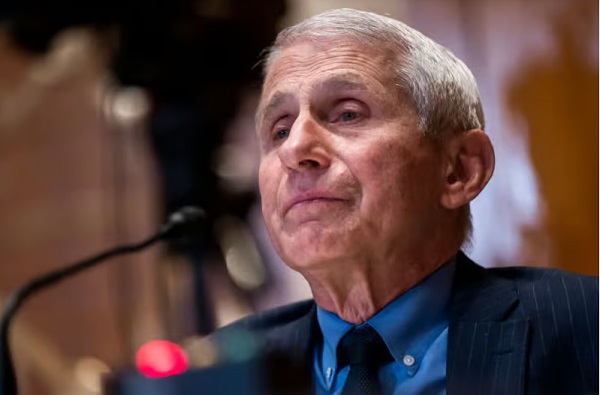
From the Brownstone Institute
By
Anthony Fauci must be furious.
He spent years proudly being the public face of the country’s response to the Covid-19 pandemic. He did, however, flip-flop on almost every major issue, seamlessly managing to shift his guidance based on current political whims and an enormous desire to coerce behavior.
Nowhere was this more obvious than his dictates on masks. If you recall, in February 2020, Fauci infamously stated on 60 Minutes that masks didn’t work. That they didn’t provide the protection people thought they did, there were gaps in the fit, and wearing masks could actually make things worse by encouraging wearers to touch their face.
Just a few months later, he did a 180, then backtracked by making up a post-hoc justification for his initial remarks. Laughably, Fauci said that he recommended against masks to protect supply for healthcare workers, as if hospitals would ever buy cloth masks on Amazon like the general public.
Later in interviews, he guaranteed that cities or states that listened to his advice would fare better than those that didn’t. Masks would limit Covid transmission so effectively, he believed, that it would be immediately obvious which states had mandates and which didn’t. It was obvious, but not in the way he expected.

And now, finally, after years of being proven wrong, the White House has officially and thoroughly rebuked Fauci in every conceivable way.
White House Covid Page Points Out Fauci’s Duplicitous Guidance
A new White House official page points out, in detail, exactly where Fauci and the public health expert class went wrong on Covid.
It starts by laying out the case for the lab-leak origin of the coronavirus, with explanations of how Fauci and his partners misled the public by obscuring information and evidence. How they used the “FOIA lady” to hide emails, used private communications to avoid scrutiny, and downplayed the conduct of EcoHealth Alliance because they helped fund it.
They roast the World Health Organization for caving to China and attempting to broaden its powers in the aftermath of “abject failure.”
“The WHO’s response to the COVID-19 pandemic was an abject failure because it caved to pressure from the Chinese Communist Party and placed China’s political interests ahead of its international duties. Further, the WHO’s newest effort to solve the problems exacerbated by the COVID-19 pandemic — via a “Pandemic Treaty” — may harm the United States,” the site reads.
Social distancing is criticized, correctly pointing out that Fauci testified that there was no scientific data or evidence to support their specific recommendations.
“The ‘6 feet apart’ social distancing recommendation — which shut down schools and small business across the country — was arbitrary and not based on science. During closed door testimony, Dr. Fauci testified that the guidance ‘sort of just appeared.’”
There’s another section demolishing the extended lockdowns that came into effect in blue states like California, Illinois, and New York. Even the initial lockdown, the “15 Days to Slow the Spread,” was a poorly reasoned policy that had no chance of working; extended closures were immensely harmful with no demonstrable benefit.
“Prolonged lockdowns caused immeasurable harm to not only the American economy, but also to the mental and physical health of Americans, with a particularly negative effect on younger citizens. Rather than prioritizing the protection of the most vulnerable populations, federal and state government policies forced millions of Americans to forgo crucial elements of a healthy and financially sound life,” it says.
Then there’s the good stuff: mask mandates. While there’s plenty more detail that could be added, it’s immensely rewarding to see, finally, the truth on an official White House website. Masks don’t work. There’s no evidence supporting mandates, and public health, especially Fauci, flip-flopped without supporting data.
“There was no conclusive evidence that masks effectively protected Americans from COVID-19. Public health officials flipped-flopped on the efficacy of masks without providing Americans scientific data — causing a massive uptick in public distrust.”
This is inarguably true. There were no new studies or data justifying the flip-flop, just wishful thinking and guessing based on results in Asia. It was an inexcusable, world-changing policy that had no basis in evidence, but was treated as equivalent to gospel truth by a willing media and left-wing politicians.
Over time, the CDC and Fauci relied on ridiculous “studies” that were quickly debunked, anecdotes, and ever-shifting goal posts. Wear one cloth mask turned to wear a surgical mask. That turned into “wear two masks,” then wear an N95, then wear two N95s.
All the while ignoring that jurisdictions that tried “high-quality” mask mandates also failed in spectacular fashion.

And that the only high-quality evidence review on masking confirmed no masks worked, even N95s, to prevent Covid transmission, as well as hearing that the CDC knew masks didn’t work anyway.
The website ends with a complete and thorough rebuke of the public health establishment and the Biden administration’s disastrous efforts to censor those who disagreed.
“Public health officials often mislead the American people through conflicting messaging, knee-jerk reactions, and a lack of transparency. Most egregiously, the federal government demonized alternative treatments and disfavored narratives, such as the lab-leak theory, in a shameful effort to coerce and control the American people’s health decisions.
When those efforts failed, the Biden Administration resorted to ‘outright censorship—coercing and colluding with the world’s largest social media companies to censor all COVID-19-related dissent.’”
About time these truths are acknowledged in a public, authoritative manner. Masks don’t work. Lockdowns don’t work. Fauci lied and helped cover up damning evidence.
If only this website had been available years ago.
Though, of course, knowing the media’s political beliefs, they’d have ignored it then, too.
Republished from the author’s Substack
-
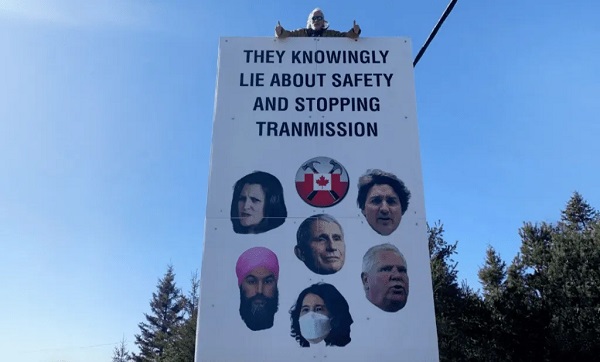
 COVID-199 hours ago
COVID-199 hours agoOntario man launches new challenge against province’s latest attempt to ban free expression on roadside billboards
-

 Energy17 hours ago
Energy17 hours agoThis Canada Day, Celebrate Energy Renewal
-
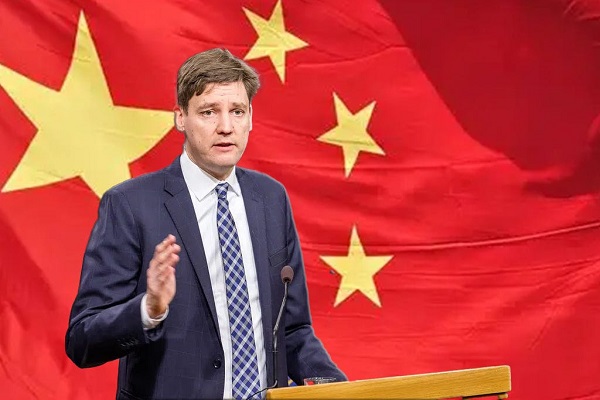
 Business1 day ago
Business1 day agoWhile China Hacks Canada, B.C. Sends Them a Billion-Dollar Ship Building Contract
-
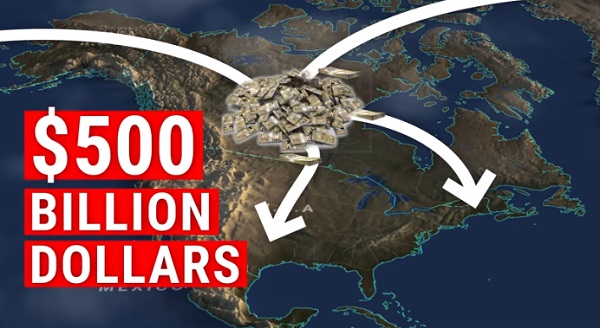
 Alberta1 day ago
Alberta1 day agoSo Alberta, what’s next?
-
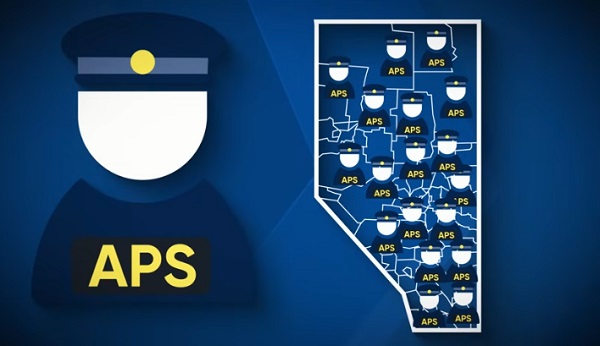
 Alberta8 hours ago
Alberta8 hours agoAlberta Next Takes A Look At Alberta Provincial Police Force
-
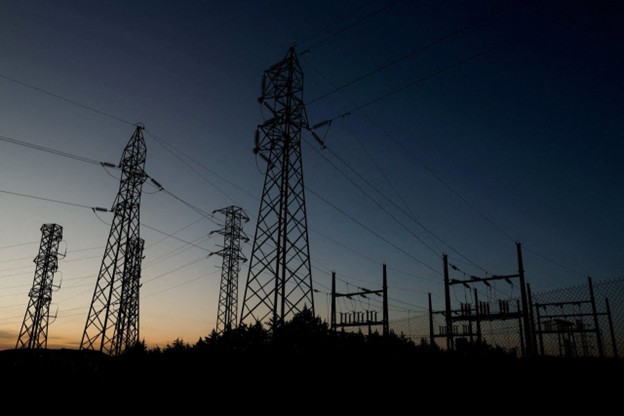
 Bjorn Lomborg1 day ago
Bjorn Lomborg1 day agoThe Physics Behind The Spanish Blackout
-

 Alberta10 hours ago
Alberta10 hours agoCanadian Oil Sands Production Expected to Reach All-time Highs this Year Despite Lower Oil Prices
-
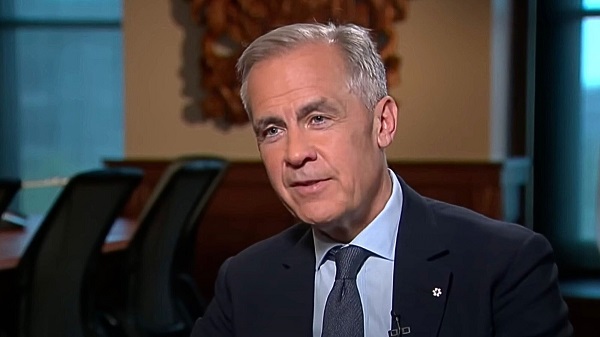
 Business12 hours ago
Business12 hours agoPotential For Abuse Embedded In Bill C-5








